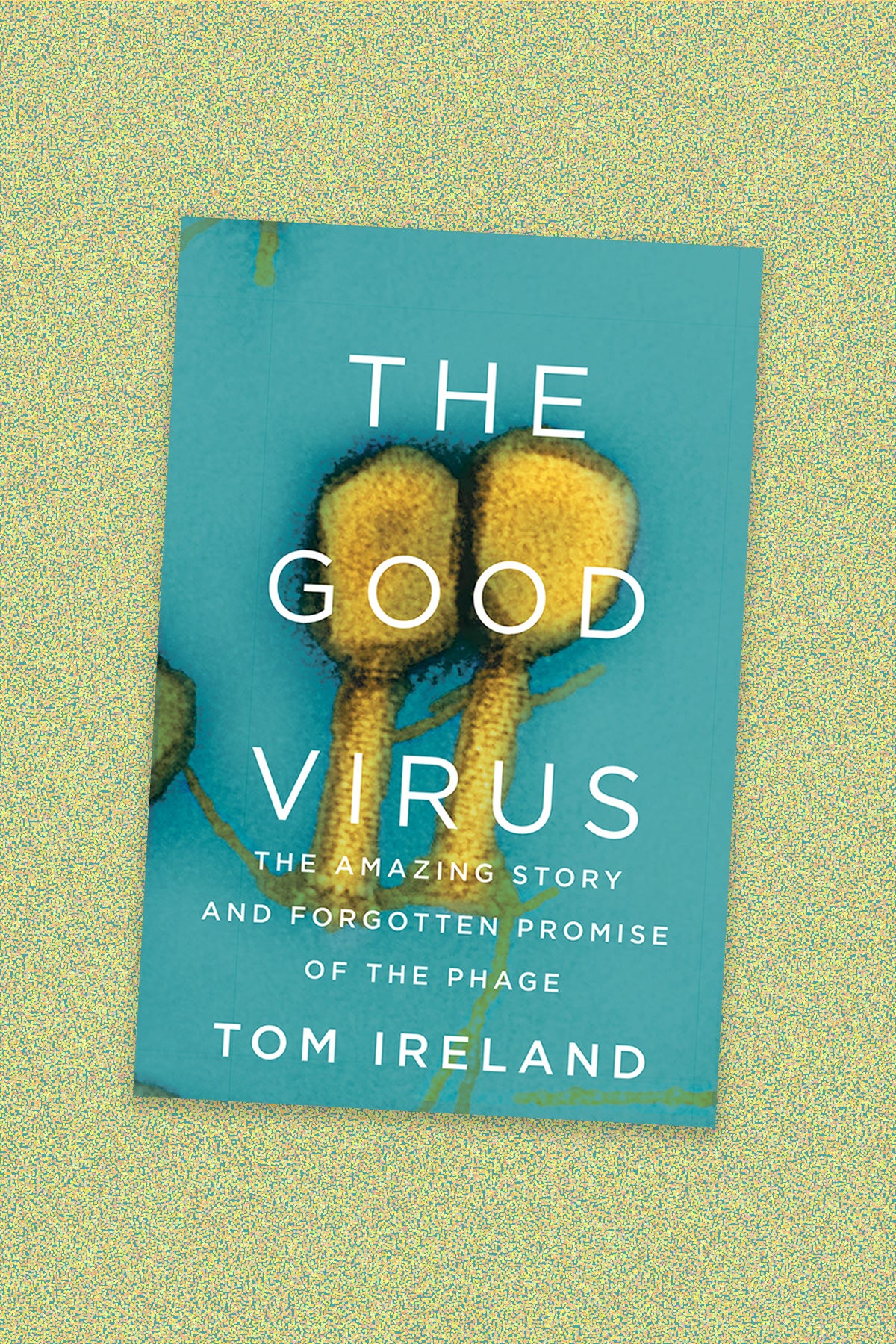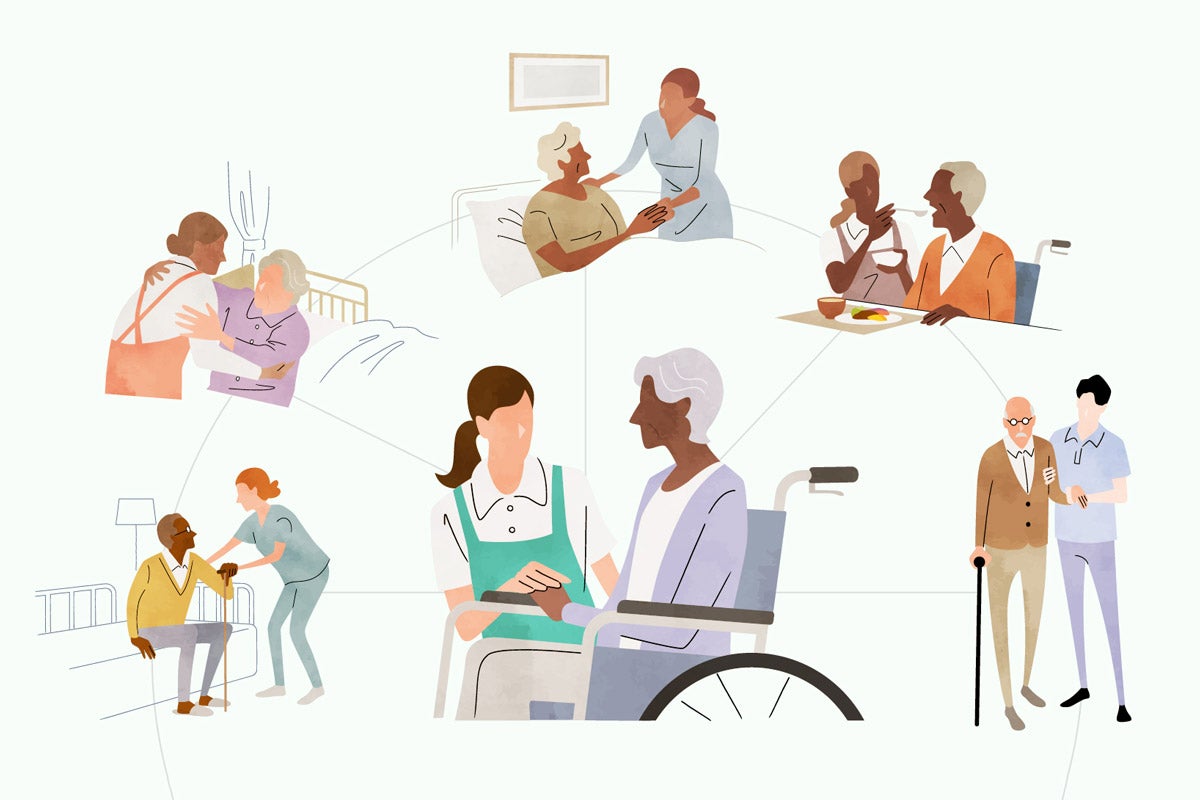
Book
On the hunt for “The Good Virus”
In the fight against drug-resistant bacteria, antibiotics are failing. A small but growing group of scientists believe we might defeat these “superbugs” by teaming up with bacteria’s oldest foes: viruses.
Bacteriophages, or “good viruses,” are the heroes of Tom Ireland’s new history of phage therapy. An experimental treatment for infection first launched a century ago, phage therapy fell out of favor in the West with the invention of penicillin but remains a routine part of medical practice in some parts of the former Soviet Union.
Sign up for Harvard Public Health
Delivered to your inbox weekly.
Phages are viruses that evolved to only infect bacteria. As Ireland writes, phages are the world’s most numerous organism; billions teem in the soil beneath our feet, a cupful of water, or on our composting vegetables. The trick is that most of them prey on only one type of bacteria at a time. But when the right phage meets the right bacterium, the phage kills it. The implications are obvious, if humans can cultivate the right phages to kill drug-resistant bacteria, hopefully with fewer side effects than toxic antibiotics, can we eliminate the threat of antimicrobial resistance?
The problem is that matching the right phage with the right strain of bacteria is sometimes like searching for a needle in an Everest-sized stack of hay. What works for one person’s infection might not for another. The hunt for phages in all kinds of unlikely places—garbage heaps, sewage, a rotting eggplant—is a focus of the book. But having to find phages in the wild complicates the work of developing phage therapies that are as consistent as antibiotics.
Still, scientists and even some pharmaceutical companies are becoming more interested in phages—as drug-resistant infections are becoming more and more common. A widely-cited Lancet study reported that 1.27 million people died of antimicrobial-resistant infections in 2019. That’s almost on par with tuberculosis, the world’s leading infectious disease killer and also a bacterial disease increasingly resistant to antibiotics. In the U.S., a drug-resistant strain of Shigella bacteria caused the CDC to declare it a “serious public health threat” in February. Around the same time, scientists began to report higher rates of drug-resistant pneumonia amongst COVID-19 patients. A renaissance in phage therapy, perhaps, is long overdue.
In The Good Virus, we meet maverick scientists, desperate patients, and citizen virus hunters (including Ireland himself), many of whom witness the power of phages as improbable cures to untreatable, horrific infections. One teenage British girl with cystic fibrosis and a chronic drug-resistant infection undergoes a double lung transplant in London, but her infection still threatened to kill her. Her doctors were at a loss, so they emailed Graham Hatfull at the University of Pittsburgh, which houses one of the world’s largest phage collections, with 15,000 individual phage specimens, and asked him to find the right phages to kill the particular strain of Mycobacterium infecting the patient. After months of hunting, Hatfull’s library of phages—largely built by citizen “virus hunters” across the country collecting and sending him samples—finally produced a promising specimen for testing and genetic modifications. Doctors in London dosed the patient with a cocktail of two billion phages a day. With six weeks of treatment, the infection was gone.
Ireland features case studies like this one throughout the book, and he interviews scientists in Georgia, the U.S., and the UK who hope one day to develop phages that can broadly treat common diseases. While phage therapy remains experimental, its study is growing rapidly. Several U.S. universities have established centers for the study of phage therapy, including Texas A&M, University of California San Diego, and of course, the University of Pittsburgh. And Ireland writes that in 2022, a pharmaceutical company, ACD Pharma, began construction on a major phage production plant in Norway. ACD Pharma’s goal is to examine whether phages can treat multi-drug resistant pneumonia and sepsis, and to develop phages to replace the use of antibiotics in industrial farming and aquaculture.
Though Ireland’s relentless optimism about phage therapy’s potential can suggest that only miserly pharmaceutical companies stand in the way of the treatment’s widespread availability, phage therapy is a long way from being consistently effective at treating infections.
Ireland acknowledges that phages will likely be part of an expanded toolkit, rather than a singular weapon, against bacterial threats.
The hunt for good viruses is on.
Book cover: Courtesy of W.W. Nortion & Company
THE GOOD VIRUS: The Amazing Story and Forgotten Promise of the Phage | By Tom Ireland | 389 pp. | W.W. Norton & Company


